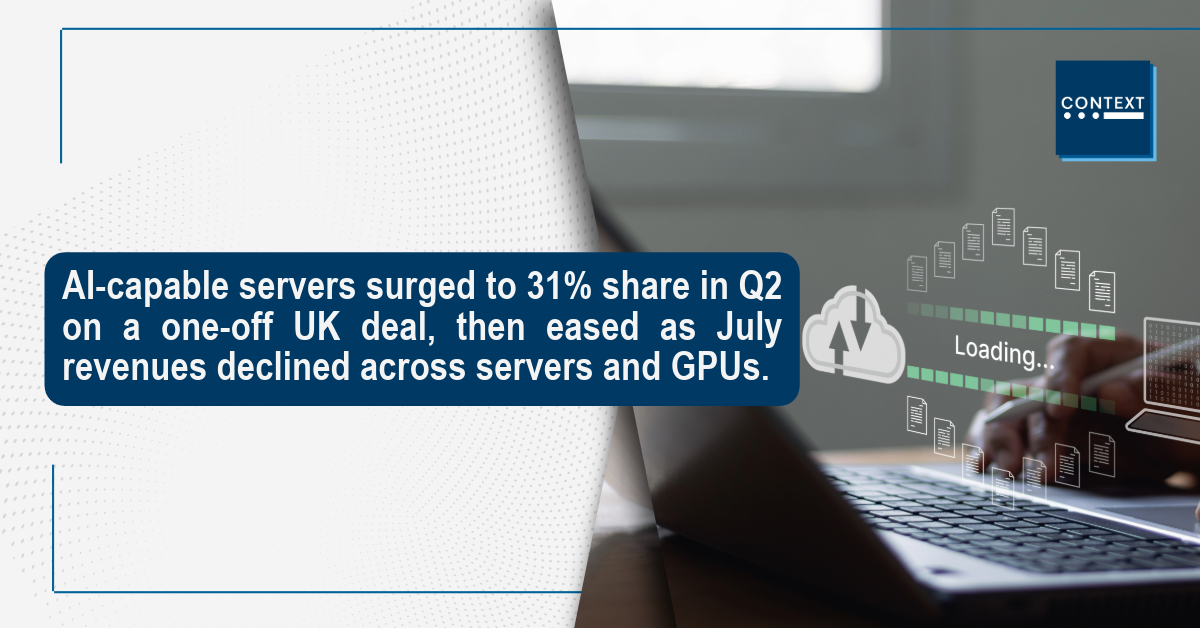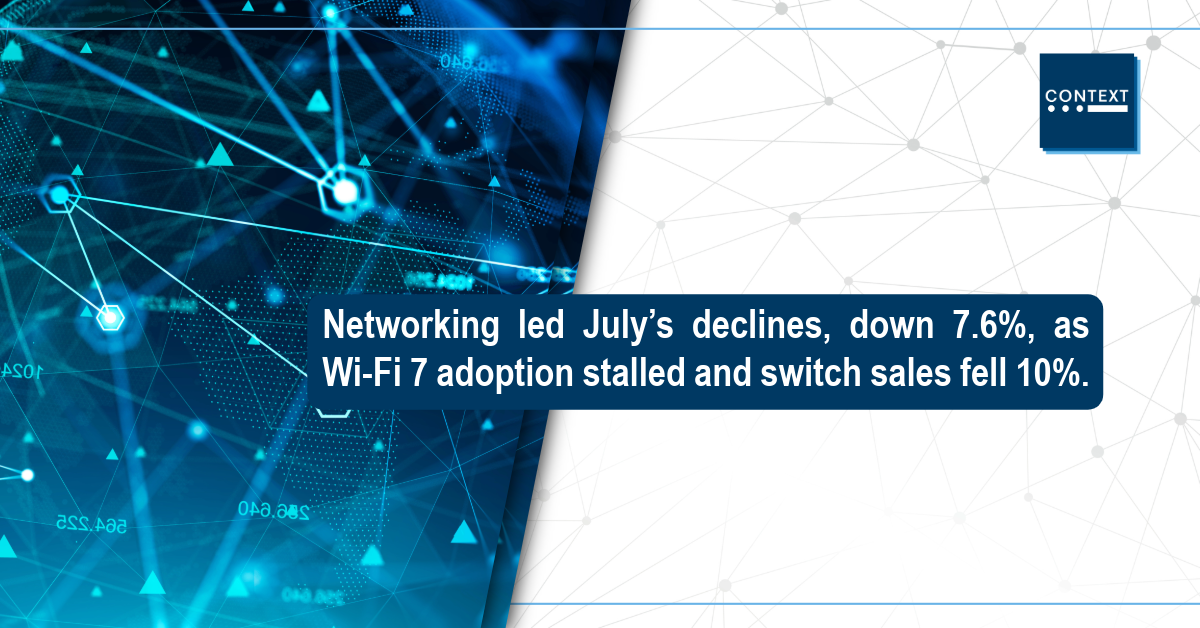The enterprise IT landscape is in a
constant state of flux. While headlines often focus on the explosive
growth of AI, a deeper look at the data reveals a more nuanced and
compelling story. Recent market performance in July 2025 shows that
traditional servers are the quiet powerhouse driving overall growth,
while other segments like networking and storage face unique challenges.
This report, based on an in-depth
analysis of enterprise infrastructure categories—servers, storage, and
networking—across key European countries, provides a clear-eyed view
of what’s truly happening in the market.
The Real Story: Traditional Servers vs. AI Servers
When you hear about the AI market,
you're likely picturing massive growth. And in some cases, you'd be
right. In Q2, the AI-capable server market share spiked to 31%, a
significant leap from its usual 10%. However, this wasn’t a sign of a
new, sustained trend. Instead, it was an outlier driven by a single,
massive graphics card deal in the UK.

By July, the market had normalised,
and both AI servers and graphics cards saw a decline in revenue. It’s
a clear reminder that AI investment is currently characterised by
these sharp, sporadic spikes, rather than consistent, month-over-month growth.
So what’s keeping the market afloat?
Traditional servers
These workhorse systems grew at a
healthy, double-digit rate in July, largely fuelled by a wave of
post-COVID investment and long-overdue hardware refreshes. This steady
performance was strong enough to offset the dip in AI-related revenue,
pushing the entire enterprise server market to a 1% year-over-year
growth. This highlights a crucial point: while AI gets the attention,
the fundamental demand for reliable, traditional infrastructure is the
backbone of the market.
The Storage Upgrade Dilemma
Enterprise storage presents a
different kind of challenge. While performance was nearly flat in July
at -0.9%, there's an interesting dynamic at play. On the one hand,
gigabyte demand is up, and SSDs are seeing significant growth (22% in
July), partly due to a price drop. Data management software also
showed growth.
However, these gains were wiped out
by declines in hyper-converged infrastructure and disk arrays, which
fell by 6%. The core issue? Customers are prioritising more
straightforward server upgrades over the more complex process of
replacing entire storage systems. Instead, many are simply expanding
the memory capabilities of their current systems, delaying
full-scale upgrades.
This suggests a key insight for
storage vendors: the current market isn't about selling brand-new
systems but about providing seamless expansion solutions.
Wi-Fi 7's Early Adopter Problem
Of the three categories, networking
remains the biggest challenge. It experienced the steepest decline,
falling 7.6% in July. While growth drivers like transceivers and
networking software are still active, they are being offset by a 10%
decline in switches and a drop in wireless sales.

The primary reason for the wireless
slump is the stalled transition to Wi-Fi 7. Although the technology is
growing, it's still in the "early adopter" phase. Many
businesses are still satisfied with their existing Wi-Fi 6 systems and
don't see compelling use cases to justify the cost and effort of an upgrade.
For vendors, this is a clear
signal: the market needs more than just new features. It needs to be
convinced of a tangible value proposition for upgrading.
Diverging Market Dynamics Across Europe
The overall market performance in
Europe paints a mixed picture, with significant variations from
country to country.
- Italy stands out as a strong performer, with
servers up by 35% and storage growing by 2%. The one drag on its
performance is networking, which declined by 30%.
-
Spain also saw impressive growth, with the server market
doubling in July.
- In contrast, France is facing
significant economic challenges. The country saw double-digit
declines in both servers and storage, with only minor growth in
networking.
This highlights a key insight:
while broad trends are important, local economic conditions and
market-specific dynamics can create entirely different realities on
the ground.
The Bottom Line
While AI deals will continue to
create headlines, the true health of the enterprise IT market is
driven by foundational factors: overdue refreshes, strategic upgrade
decisions, and a need for compelling use cases.
The market is in a fascinating
transition period. The coming quarters will reveal how vendors adapt
to these nuanced challenges—whether they can make a more compelling
case for Wi-Fi 7, simplify the storage upgrade process, and continue
to leverage the steady demand for traditional infrastructure.
For more on these and
other IT channel trends, tune into CONTEXT’s weekly IT
Industry Forum webinars. Register here.